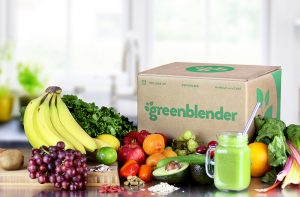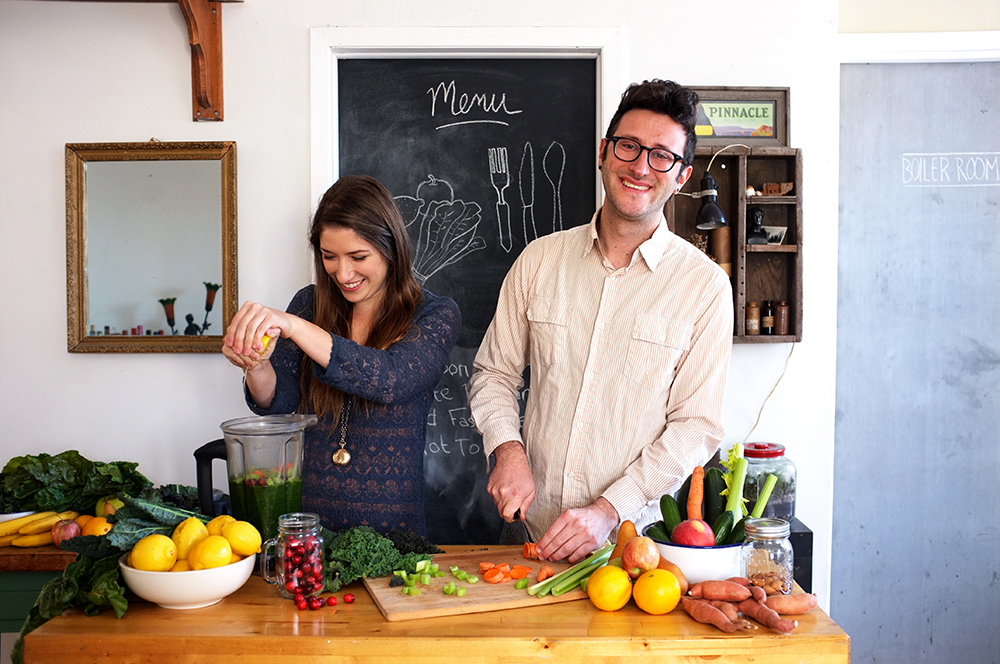By Nancy Weingartner
 Jenna Tanenbaum, 28, and Amir Cohen, 32, launched their smoothie delivery business, GreenBlender, with a $500 ad budget slated for Google ad words and a website. It was a lean start, Tanenbaum admits, and just two-and-a-half years ago, they were the ones riding the subway delivering boxes of fresh produce to customers in Brooklyn. Their mantra was “test quickly, fail fast and see what people want before you invest a lot of money,” Tanenbaum said. Those early customers were their beta group.
Jenna Tanenbaum, 28, and Amir Cohen, 32, launched their smoothie delivery business, GreenBlender, with a $500 ad budget slated for Google ad words and a website. It was a lean start, Tanenbaum admits, and just two-and-a-half years ago, they were the ones riding the subway delivering boxes of fresh produce to customers in Brooklyn. Their mantra was “test quickly, fail fast and see what people want before you invest a lot of money,” Tanenbaum said. Those early customers were their beta group.
Both Cohen and Tanenbaum had worked for digital start-ups—she, most recently, for ClassPass, a fitness site, and he for CollegeHumor, “the funniest stuff on the Internet.” While CollegeHumor was funny, nothing’s as much fun as running your own company when you’re in your late 20s/early 30s. It was Tanenbaum who first introduced her boyfriend Cohen to the healthy addiction of smoothies. “I love running, I’ve done a half Ironman, I like new diets,” she said. “He’s not into that.”
But because she loved him anyway, she began making him smoothies for breakfast. And lo and behold, he emerged from the experience with more energy and better sleep quality. Since he started his day with one healthy decision, it became easier to continue that health-mindfulness the rest of the day. “Smoothies are the gateway drug to healthy living,” Tanenbaum said.
They bootstrapped the early development of the company themselves, but the fact that it was a subscription service helped. “Cash flow was in our favor,” Tanenbaum said. They have since raised a small seed round from friends, families and angel investors, a connection that requires a lot of meetings and a lot of no’s, she said.
The couple no longer has to do everything themselves. They employ a staff of 50 and have expanded into three facilities, covering the East Coast to Illinois, West Coast to Colorado and soon the middle of the country.
Their product is a weekly box packed on ice containing proportioned ingredients and recipes for five smoothies (two 12-ounce servings). Fruits and vegetables are organic. Some “light chopping” is required, Tanenbaum pointed out, but only because to cut up all the fruit and vegetables would require preservatives, a negative in their world.
Included among the 30 different items in the box are small packets of 10 boosters or superfoods, of which only a small amount is needed. Left to their own devices, smoothie enthusiasts would have to buy a larger-than-needed quantity at the store.
“Members don’t choose” their smoothie recipes, she said. “We curate the menu.”
“Curating,” she said, is their added value. Since healthy eating is “eating the rainbow,” GreenBlender provides a rotating selection of smoothie ingredients and combinations. So you’ll only get one apple a week, not several.
One of the complaints about making smoothies at home by most people who try this on their own is the amount of refrigerator space the fresh produce takes up, along with the food waste. It’s also expensive.
“We send exactly the amount you need,” Tanenbaum said. For instance, if a recipe calls for two handfuls of spinach, that’s what you get, not an entire bunch.
There’s no food waste and the packing is compostable. Instead of using Styrofoam for insulation, they use recycled denim (In this case these may be your father’s jeans.)
The subscription plan is $39 to $49 a week, and subscribers are mostly women. The market potential is huge, because 85 percent of U.S. residents have blenders,” she said. The model fits the millennial craving for an experience with their food, which is another reason “light chopping” is a positive rather than a negative. Assembling the smoothies is also a teaching moment.
“We see ourselves as a health brand,” she said. “Our mission is to create healthy habits.”
With that thought in mind, there may be other product lines in the future. “We’re going to keep with food,” she said. “It’s the most important piece to someone’s diet. You can’t outrun a bad diet.”


